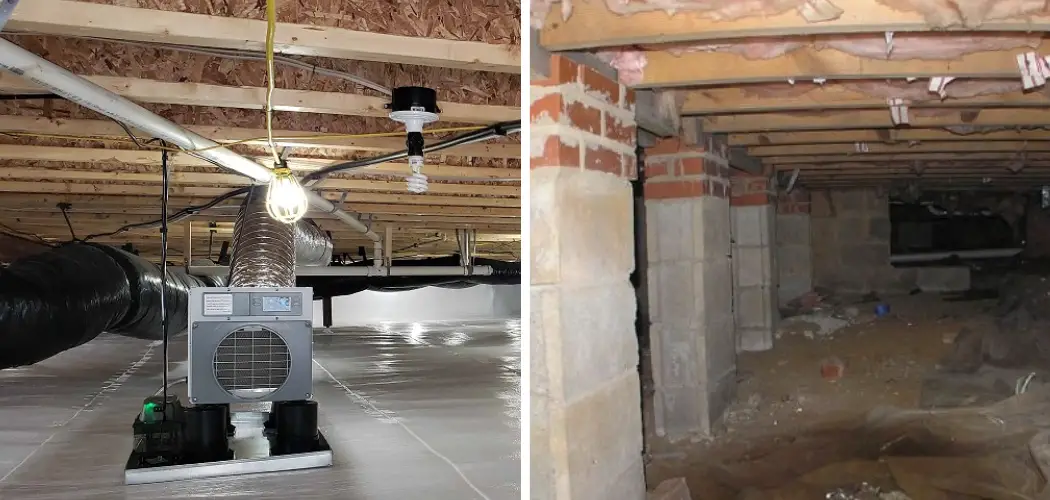As the winter chill continues to descend, most of us are snuggling up under warm blankets and layers of clothing. However, for homeowners with a crawl space in their homes, keeping any area beneath their living space warm can be a challenge.
With certain steps that you can take, however, heating your crawl space this winter is possible – and it’s easier than you think! This blog post will explore how to heat a crawl space in winter months so that your family stays comfortable all season long.
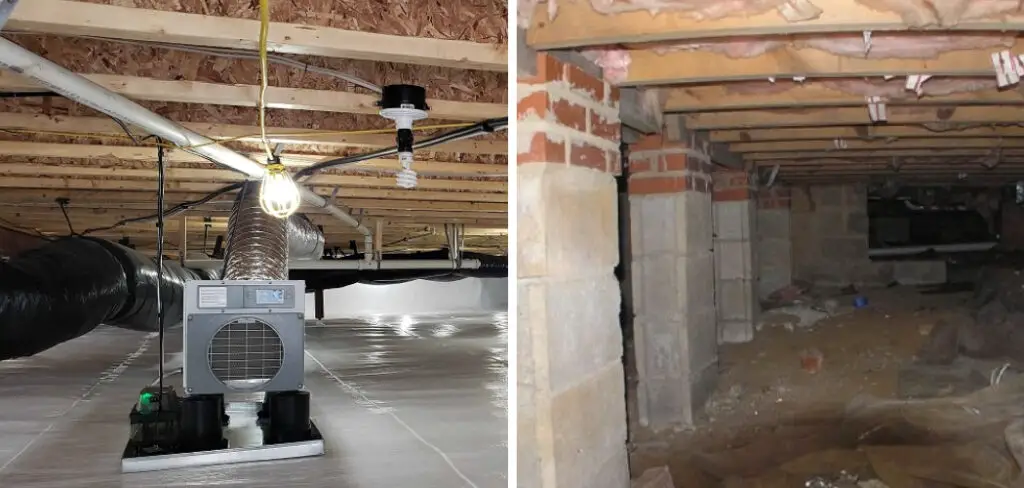
Does Crawl Space Stay Warm in Winter?
Heating a crawl space in winter can be a challenge, especially if the area is not properly insulated. Without insulation to protect against cold air seeping in or warm air leaking out, your crawl space may struggle to maintain an optimal temperature during the winter months.
To make sure your crawl space stays as warm as possible during the colder months of the year, you should consider adding insulation, sealing any gaps or cracks in the walls or flooring, and using a space heater to help regulate temperatures.
Properly heating your crawl space can also help reduce humidity levels, which is important since high humidity can lead to mold growth and health issues. With the right steps and precautions, you can make sure that your crawl space stays warm and comfortable all winter long.
You can use insulation to help keep the cold air out and the warm air in during the winter months. This should be done in both the walls and floor of your crawl space as well as any other exposed surfaces. You should also check for any gaps or cracks that may allow cold air in and seal them up with caulking or weather stripping.
Additionally, adding a space heater to your crawl space can help keep it warm during the winter. This should be placed away from any flammable materials and carefully monitored to make sure that it doesn’t overheat the area.
By taking these necessary steps, you can ensure that your crawl space stays warm and comfortable throughout the cold winter months. With proper insulation, the sealing of cracks, and the use of a space heater, you can enjoy a cozy crawl space all year round!
10 Methods How to Heat a Crawl Space in Winter
1. Use a Crawl Space Heater
One of the most effective ways to heat a crawl space is to use a dedicated crawl space heater. Crawl space heaters are designed specifically for this purpose and can be very effective at keeping the space warm.
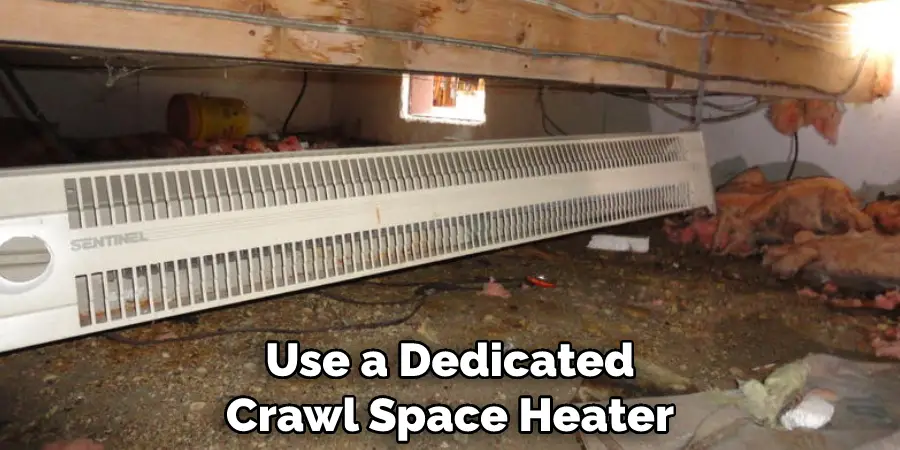
There are a variety of different types of crawl space heaters available on the market, so be sure to do your research to find the one that best suits your needs. While some may be more expensive than others, the cost will pay for itself in the long run by saving you money on energy bills.
2. Insulate the Crawl Space
Another way to keep a crawl space warm is to ensure that it is properly insulated. This will help to prevent heat from escaping and will also keep the space warmer in general. There are a variety of different insulation materials that can be used for this purpose, such as foam board, fiberglass batting, and spray foam.
Any of these materials can be used to insulate the crawl space walls and floor in order to maximize warmth and reduce energy costs. It is also important to make sure that any air leaks around windows, doors and other openings in the crawl space are sealed in order to make sure that no warm air is escaping.
After the insulation has been installed, it is a good idea to invest in a vapor barrier for the floor of the crawl space as another way to help keep the area warm and energy efficient.
3. Use a Dehumidifier
Another method that can be used to heat a crawl space is to use of a dehumidifier. Dehumidifiers work by removing moisture from the air, which can help to make the space feel warmer overall. Additionally, dehumidifiers can also help to prevent mold and mildew growth, which can be a problem in damp spaces like crawl spaces.
When using a dehumidifier, it’s important to make sure the machine is placed in an area that gets enough ventilation and does not become overheated. The dehumidifier should be emptied regularly or connected to a drain for continuous removal of moisture from the space.
4. Seal Any Leaks
If there are any leaks in the crawl space, it is important to seal them in order to prevent heat from escaping. Leaks can occur around doors, windows, vents, and other openings, so are sure to check all of these areas carefully.
If you find any leaks, you can use caulking or weather-stripping to seal them up. Doing this will help keep the heat inside and prevent it from escaping outside. Additionally, adding insulation to the crawl space walls can also help retain warmth and make your home more energy efficient.
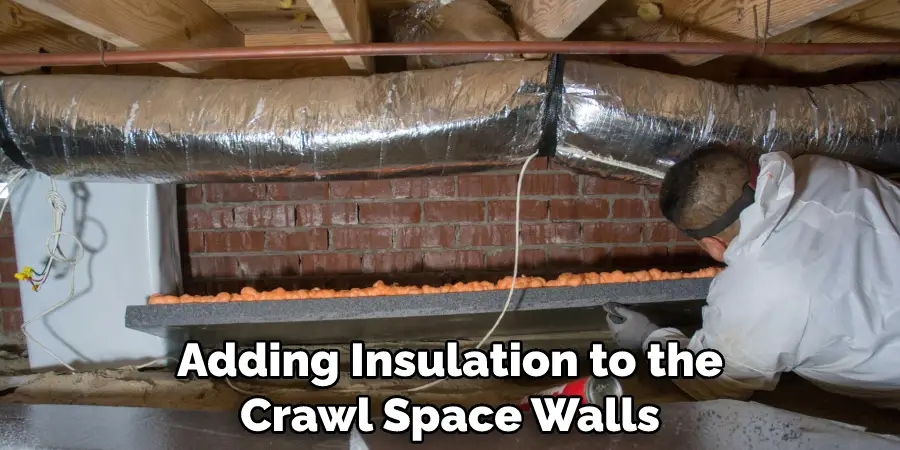
5. Use a Humidifier
While this may seem counterintuitive, using a humidifier in the crawl space can actually help to make it feel warmer overall. This is because humid air holds heat better than dry air, so by increasing the humidity in the space, you can actually make it feel warmer. Just be sure not to overdo it, as too much humidity can lead to problems like mold and mildew growth.
Setting up a humidifier in the crawl space can be an effective way to help maintain a comfortable temperature. Although, be sure to turn it off when the space is not in use, as this could lead to an increase in moisture and potential problems.
6. Add Some Ventilation
Adding some ventilation to the crawl space can also help to make it feel warmer overall. This is because ventilation helps to circulate air and prevents stagnant air from building up in the space. In order to add ventilation, you can install vents in the walls or use a fan system that blows warm air into the space.
Additionally, you could upgrade your insulation and add some wall panels to help keep the heat inside and prevent it from escaping through cracks and openings. These steps will all help maintain a comfortable temperature for your crawl space during the winter months.
7. Use Reflective Insulation
Reflective insulation is another type of insulation that can be used in order to keep a crawl space warm. This type of insulation works by reflecting heat back into the space instead of allowing it to escape through walls or ceilings.
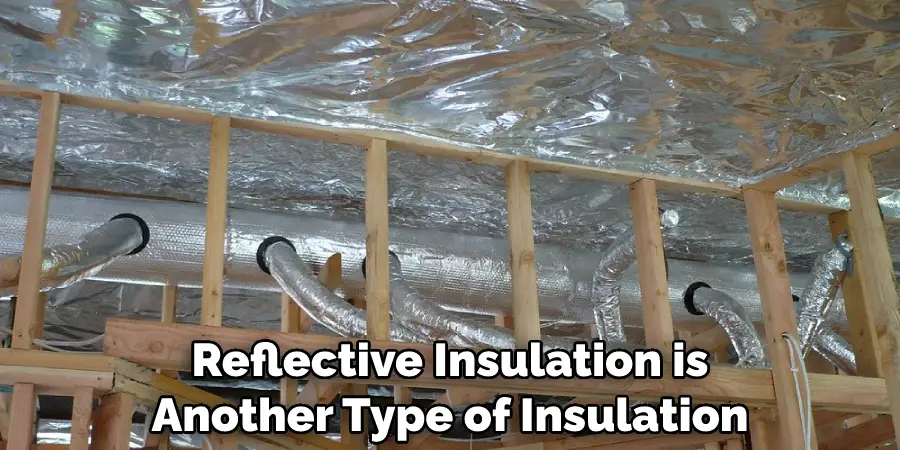
While reflective insulation is often used in attic spaces, it can also be used in crawl spaces to keep them warm. When installing reflective insulation in your crawl space, make sure to use multiple layers and seal off any gaps or cracks. This will ensure that the insulation is working properly and your crawl space stays warm.
8. Install Radiant Floor Heating
Radiant floor heating is another effective way to keep a crawl space warm during winter months. This type of heating system works by circulating hot water through pipes that are installed beneath the flooring surface. Radiant floor heating is an efficient way to heat a space and can provide even heating throughout the entire area.
It is important to make sure that the pipes are properly insulated and sealed in order to prevent any air leaks or water damage. Installing radiant floor heating can be a bit of an undertaking, so it is best to consult with a professional to ensure the system is installed correctly.
9. Wrap the Water Heater
Wrapping your water heater with insulation can also help to keep the crawl space warm during colder months. While this may not be a feasible option for all homeowners, it can help to keep the heat in and reduce heating costs.
Make sure that the insulation you use is applicable to the type of water heater you have and that it is properly installed. Once your water heater has been wrapped, monitor the temperature of your crawl space for a few days to see if there are any changes after wrapping the water heater.
10. Consider Solar Heating
Solar heating is an increasingly popular option for heating a crawl space. With solar heating, the sun’s energy is harnessed and used to warm the air in the crawl space. This type of heating is environmentally friendly and, over time, can save money on energy bills.

Solar heating kits are available that include fans, solar panels, sensors, and other components necessary for installation. It’s important to make sure the kit you purchase is specifically designed for crawl spaces. Additionally, the size and wattage of your solar panel should be based on the size of your crawl space.
Conclusion
From understanding furnace ratings to hiring professionals for installation, the maintenance and care associated with effectively heating a crawl space during winter may be confusing yet worthwhile. Overall, by following the guidelines described in this blog post about how to heat a crawl space in winter and consulting resources when necessary, you can confidently prepare yourself for any heavy snowfall that may come this winter!

